Ruapekapeka / Kawiti Caves / Kawakawa
After leaving we drove one more
time the scenic road along the Whangarei Harbour – super nice before leaving
and heading into the green hillsides of Northland.
Ruapekapeka Pa
- For 10 days in Jan 1846: 1600 British troops and allied Ngapuhi bombarded 500 Maori warriors (including Heke’s 100 warriors) hunkering down in a pa with trenches, tunnels and wooden palisades on this lonely hillside: here was the final battle of the Northland war
- At the beginning the British only fired one cannon at a time and then allowed time so that the Maoris could take out the fire before firing again. They then started a large bombardment during a time when most of them rested or were praying behind the Pa. They withdrew in the bush where they previously made defense position and the British were left with an empty pa. The British left back for the coast and after it piece was made – but the peace was very precarious until Heke died in 1860
- If you have had enough I have had enough – If you not have had enough, I have had not enough either”
- It means “the bats nest” and refers to this safe “nest-like” underground systems
- The Ruki Kawiti built his last and strongest fighting pa here - This is the best preserved of all of New Zealands war sites. There were underground tunnels, caves, bomb-proof shelters (some of them 3 me deep – I think we saw one)
- Also don’t bring any food, as the blood spilled on this land made it tapu (sacred)
As per Gine the car park is too
far away – so once there we used the nice toilets and read some info about the
area, but then we turned and see there, one lonely parking spot along the
mountain road – only for us.
From up here we had an absolute
amazing view over the area – no wonder the Maori were choosing this side. We
went through a super cool carved Arch – the Maori have some amazing art work.
We walk up over the super green
nice meadow area – always amazing views – we came by that one canon the Maoris
had (made in Scottland) and there were a lot of holes in the ground and we
could still see the trenches. We also loved the huge totem pole like Maori
statue.
What’s a Pa?
- A Pa refers to a Maori village or defensive settlement: they often have palisades, defensive terraces
- They are mainly in the North Island of New Zealand, north of Lake Taupo. Around 5000 sites have been located
- Similar Pa’s are in Polynesia on the Islands of Fiji, Tonga and the Marquesa Islands
- In the Maori culture a great Pa represents the mana (power/prestige) and strategic ability of an iwi (tribe)
- They built Pa’s in defensible locations around their territory (rohe) to protect their plantation sites and settlements
- They were often constructed on prominent high grounds or volcanic cones
- By the way with the start of the flag staff war they started to built the “defense war Pa’s”
Kawiti Glowworm Cave
Our next stop was a Glowworm Cave.
As Gine read about them it was clear we have to see them… and we were super
lucky as we were the only once in a tour and had our own private tour. We put
on the rain jackets as we got told it will be cold inside. As we waited outside,
we saw those super cool stones there – so amazing – it is like a fairytale
area. We also could peak inside from there to see already some of those huge
stalactites (they hang tight to the top) and the Stalagmites (which might grow
up). And then we go inside (by the way it was really hard to understand that
New Zealand accent).
With the flashlight we went in:
and learned that the stalactites are all white unless you touch them then they
turn black from the oils of our hands and as in the old days along the outside
everyone climbed they are not really white there. Through some narrow paths
with sometimes the limestones nearly touching us or hitting Paul in his head,
we had several stops where we learned the story on how they found the cave –
learned about the glowworms and their life.
Super cool was it to see their
fishhooks hanging down super amazing looking, and when the light went off we
could see above us the glow worms like stars and a milky way going through the
cave (if you haven’t seen it before you wouldn’t believe it), we saw them
closer and discovered that there are white, blue and green glows.
One of the coolest things was that
we walked back in the dark without flashlight holding on to the railings and
slowly walking without tripping with only the glow worms lightning up the cave
above us and it is walking under the milky way of them. It was one of the most
amazing things to see. The cave itself was amazing but the glow worms – wow!!!!
It is like seeing a gigantic Milky way above you.
And even better, when we came out,
there was a whole bus tour!!! I think we came at the right time.
The story of the Kawiti
Cave:
- It is said that Roku the wife of Haumoewaeangi of the Ngaitu tribe run away from her abusive husband. She found 370 years ago the cave and climbed in it. Today we can still see inside the area where she brought stones for making fire and where the stalactites have black on them. She lived in the cave for 4 months before being discovered
- The Chief Hineamary who lived in the Waiomio valley discovered the smoke and they found here – normally they would kill an intruder but they let her life and she lived with his tribe for a while, but then returned back to her husband – who they said changed
- Today the Cave is still privately owned by descendent of Hineamaru
The Life of a Glow worm:
- Glow worm caves can be found all over NZ (and only in NZ), every cave in NZ has glow worms if there is an entrance and exit for fresh air and water
- A glow worm lives around 12 months, but only glows for around 11 months: if they are young, they are white, then it gets bluish and as they get older it gets greenish
- They are not social and are always apart from each apart (you can see that when you are closer to them)
- They only glow in the larvae state – tiny larvae are only 1-3 mm long (come out of the eggs) and you nearly can’t see them. For the next 11 months they grow by eating flies they catch in the fish hooks (which they make themselves from their salvia: it looks a little like a small string with balls) and grow until they are like a match stick: in one spot we saw the teeny tiny ones with the fish hooks they hang down and we also saw the bigger ones at the ceiling in a cave.
- They use their light to lure in prey like the flies which get caught in the sticky fish hook
- Once they get older, they become flies and mate – if a male one can’t find a female they can become female (guess they are kind of transgender) and then as it is dark and they are flies, they likely get stuck at one of the fish hooks and eaten by the glow worms (no thanks, that is not great – you eat your parents!!!)
- Glow worms need a lot of oxygen (that is why entrance/exit caves are important) – in areas where are a lot of people go into glow worm caves can be too much carbondioxid and they vanish
- Here they have around 10.000 – 15.000 glow worms in the cave and every few years biologists come and count and check on how healthy the population is
Kawakawa
Gine said to Paul our next stop is
Kawakawa we come here to see the toilets!! Paul couldn’t believe that we come
to see toilets. But first we stop before town at the District War Memorial
where they have a super cool city sign of Kawakawa. We then found a parking
spot after nearly driving on the wrong side of the road. The town is not very
big and we walked to the famous Hundertwasser toilets: they say they are the
most photographed toilets in NZ (ha-ha, and likely the most used once too!!)
Because Gine went in to have a pee in the famous toilet – Paul preferred the
newer style also super cool looking toilets. They are behind the famous one,
and here you have some more amazing views and more amazing art.
We did get ourselves than some
yummy chicken kebab to tie us over until supper and then went over to the
Vintage Railway – checked out some of the old trains and we were lucky, as we
did see one of the trains running down in the middle of the main street
(luckily they painted all red, so you know on where not to drive – yes this
town is famous for having the train running in the middle of the main road)
Why everyone uses the
toilets from Hundertwasser??
- They have organic wavy lines and are decorated with ceramic mosaics,b rightly coloured bottles, grass and plants on the roof and yes two nice round globes on the pillars. They got built in 1997 and are likely the most outlandish toilets
- Friedrich Hundertwasser designed them – until then the town of Kawakawa was nearly becoming a ghost town and suddenly the tourists came revived it
- Hundertwasser was born in Austria in 1928 as a Jew, he got baptized by a catholic church and joined the Hitler youth to survive
- In the 1970s he bought land in New Zealand at the bay of islands near Kawakawa, he loved to live and work with nature, and lived self-sufficient using solar panels, water wheels, and biological water purification. He built a bottle house with a grass roof and after he died he got buried in harmony with nature on his land in NA in “the garden of the Happy” under a tulip tree. He lived here from 1973 until his dead.
- He was against the straight line and standardizing – he called straight lines godless and immoral and “something drawn without thought and feelings” – for him human misery was a rational, sterile and monotone architecture
- In his works you can see bright colors, organic forms, a reconciliation of humans with natures
- Today he is known for some of his amazing buildings – we saw the one in Whangarei and we saw before the Hundertwasser house in Plochingen (yes close to where Gine comes from in Germany)
Opua Kauri Walk
Ready for another walk: Paul said
earlier we haven’t seen a forest – now we drive to the forest. It was a super
cool drive up, only 5 km but it was all up on gravel road with lots and lots of
curves and literally through the jungle. We came to this tiny parking lot (for
two cars) and start our short walk: after cleaning our shoes!!! Here they have
everywhere the cleaning and disinfect station (to prevent more Kauri die-back)
We loved to see again the huge umbrella-ferns and walking through the jungle.
This is a bit a different forest then we know from home. We did end up at a
viewing platform to see one huge Kauri tree which is around 400 years old. On
the way back we discovered a lot of young and middle-aged Kauri’s but the two
huge one were amazing. Paul also had a lot of fun driving back down.
By the way there are no dogs
allowed here – because Dogs kill Kiwi birds. We even saw some signs warning us
about the Kiwi birds.
The Tree Fern (Dicksonia
squarrosa)
- We saw now several once of those, and they are so cool looking, They are very common in New Zealand
- They grow fast from 10-80 cm a year, up to 6 m tall
- It produces few fronds, all of which sprout in almost horizontal fashion, they are 1.5-3 m long and form a small umbrella (so Gine calls it the Umbrella fern)
- The trunks are often used for fencing or edging and fronds sometimes start to sprout again
- They like partial shade and minimal wind, they only grow if the temp doesn’t go lower than 5 C (guess we can’t grow them at home)
The Kauri Tree
- Kauri once dominated the North Island of New Zealand forest – yes they only grow in the Northland of the North Island
- They are one of the longest living species and one of the largest – it is the largest tree in NZ
- The size doesn’t necessarily tells you how old it is, a 10 cm diameter mass can vary in age by 300 years
- The trees can live over 600 years, there are several over 1000 years old, some can be as old as 2000 years old – they found one with tree rings 4500 years old
- One 1700 year old Kauri found in a swamp dates back 42.000 years old
- Kauri were forested when the Europeans came as the wood is flexible and long – they also harvested Kauri gum. By 1990 over 90% of all Kauri forest was destroyed
- The Maori used the Kauri gum for fire starters and medicine – the Europeans dug it from the swamp for varnish and linoleum
- It is a coniferous tree with small narrow leaves
- Often where they grow, they call it Kauri Forest, even they are not the most abundant in the forest – the Kauri change the soil under their canopy to create unique plant combinations
- Today the Kauri are protected
We Arrive in Paihia
And only a bit more and we arrive in Paihia – our Motel is
only 1 block from the ocean and close to downtown. After checking in, we did get
a ground floor room!!! And have a front and back entrance with keys perfect -it
was time for coffee. With a cute little balcony looking over the tiny yard –
but still tropical looking, we head out to the “big” grocery store (which is
not that big!!!). But then Pahia is not
a big town with only 1700 people living here)
Back we make our tortellini supper and then walk to the ocean
and all along the restaurants and souvenir shops, check out the other
supermarket (which by the way has bread!!!) and have a relaxing evening in our
place.

 Kawakawa, Northland, New Zealand
Kawakawa, Northland, New Zealand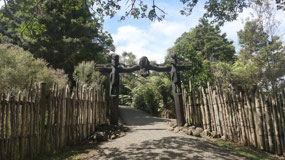
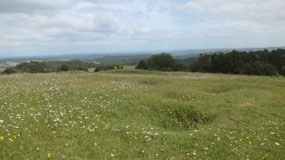
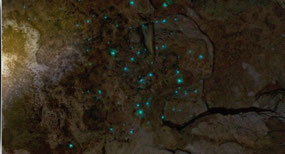
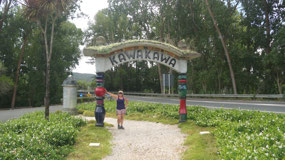
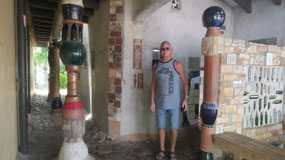
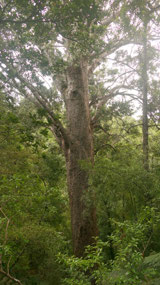
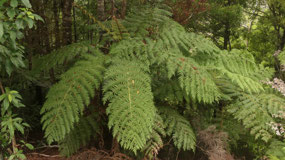
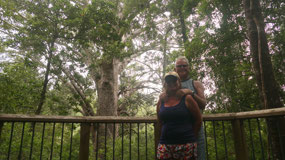


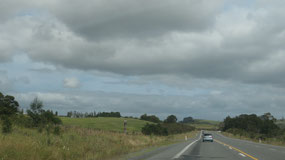
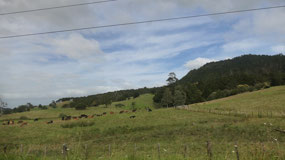
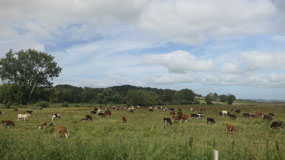
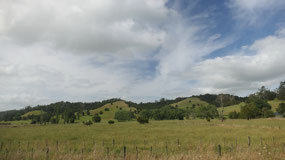
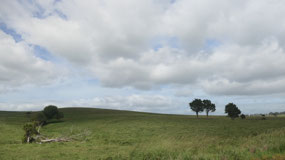
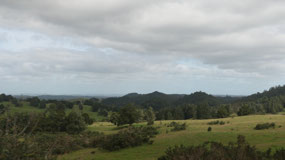
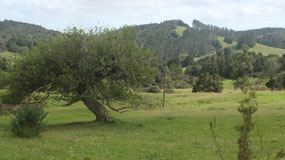
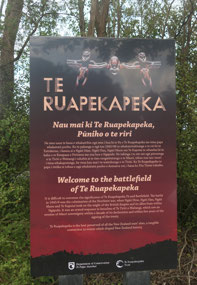
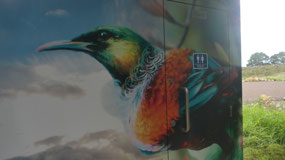
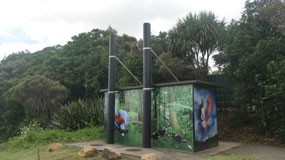
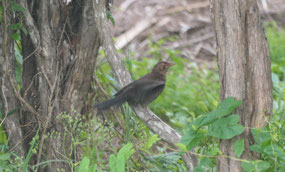
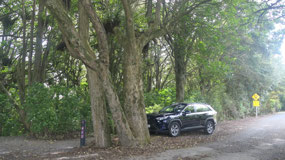
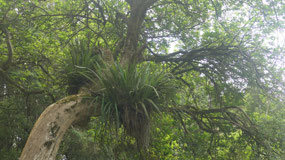
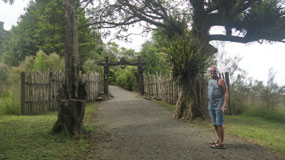
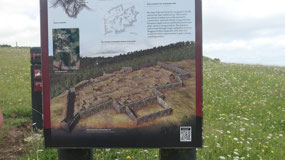

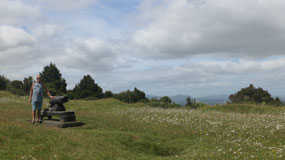
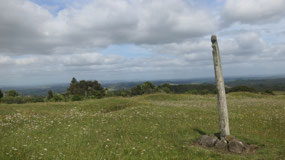
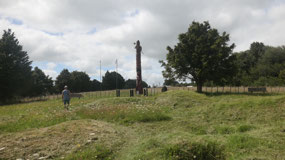
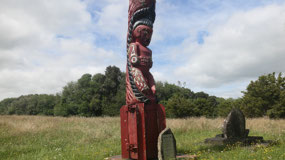
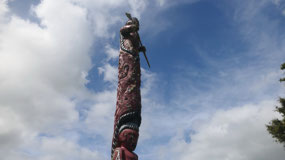
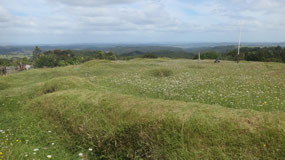

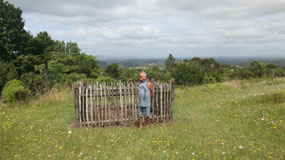
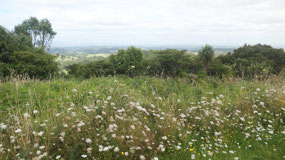
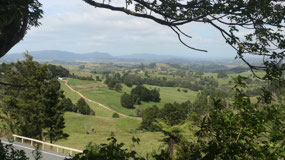
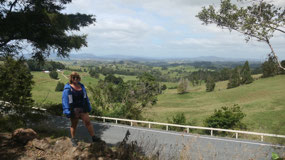
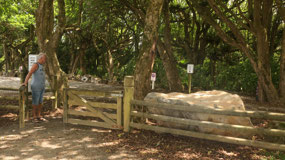
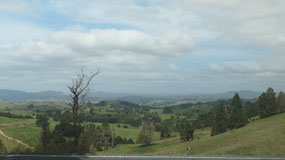
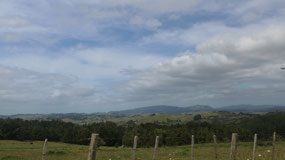
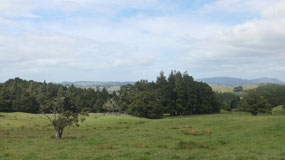
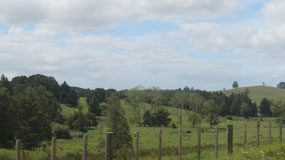

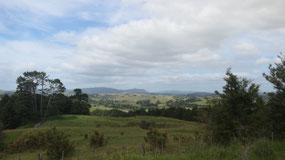
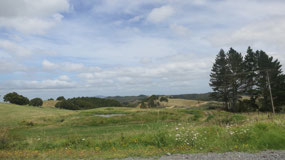
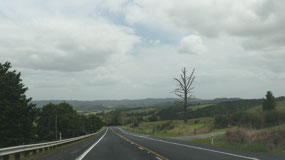
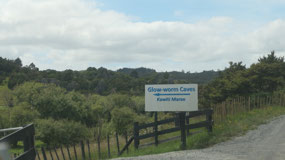
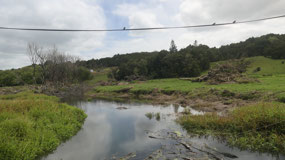
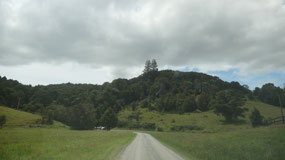
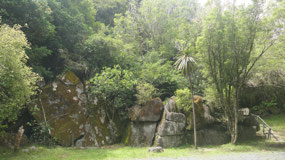
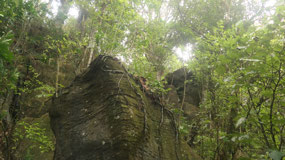
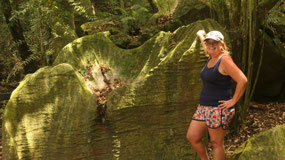
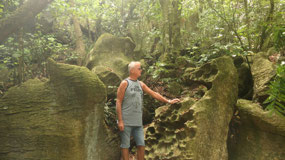
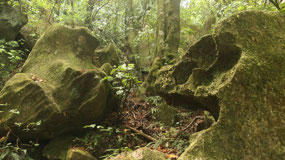
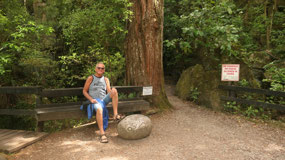
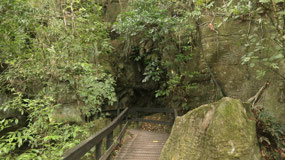
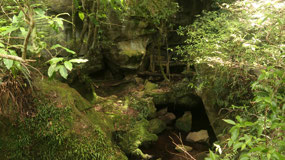
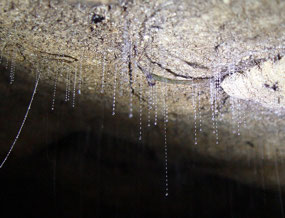
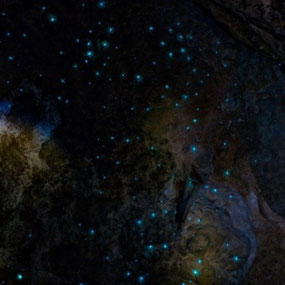
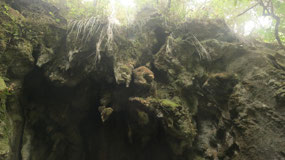
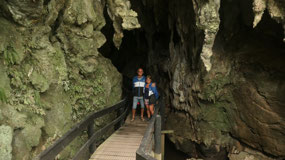
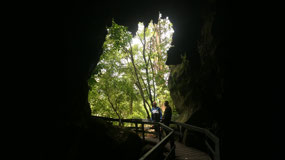
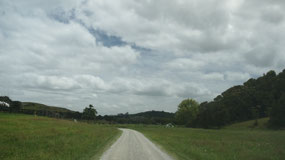
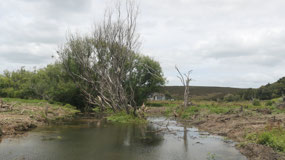
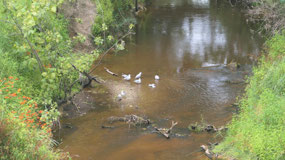
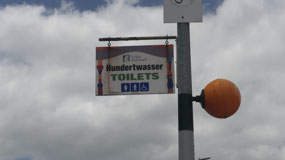
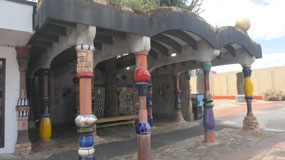
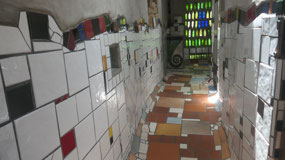
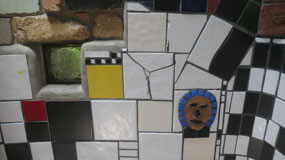
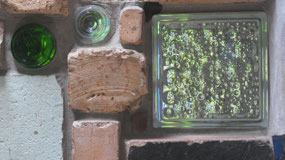
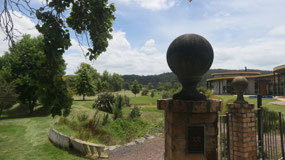
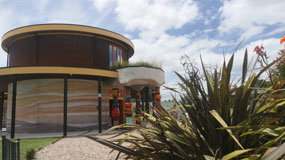
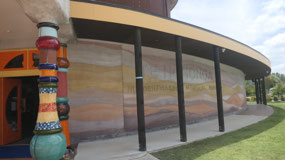
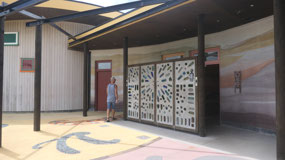
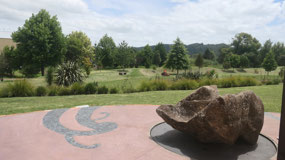
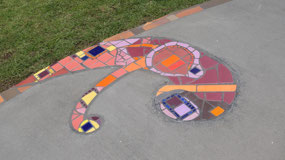
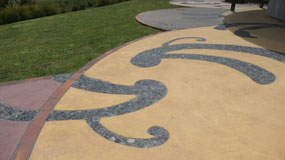
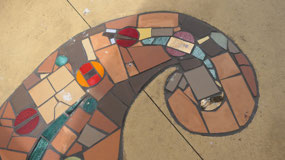
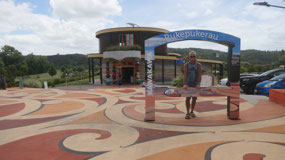
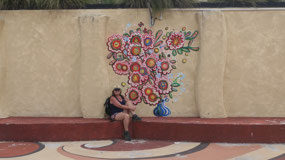
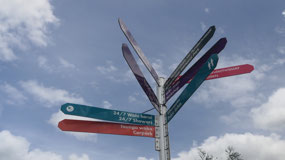
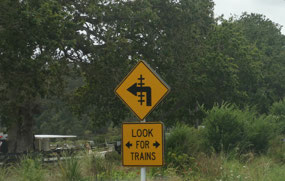
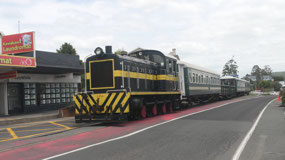
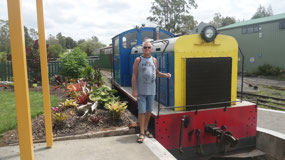
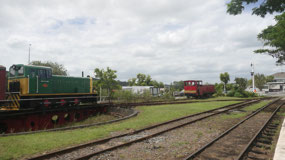
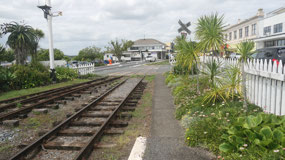
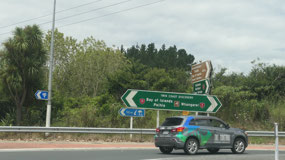
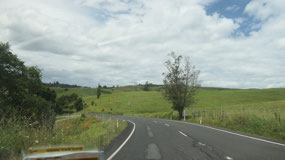
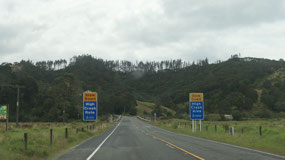
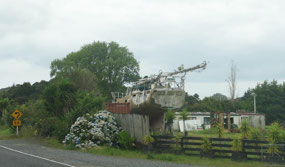
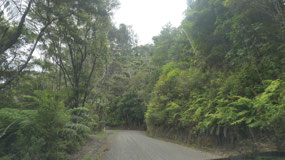
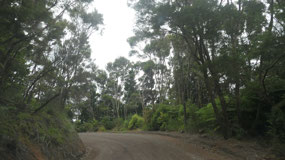
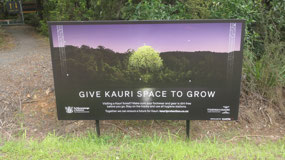
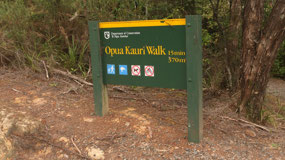
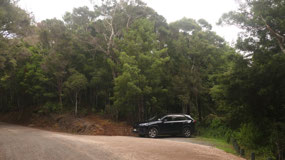

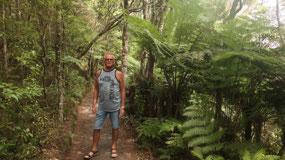
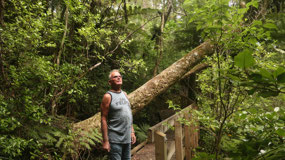
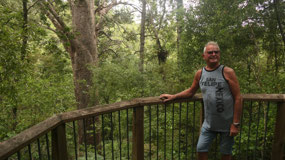
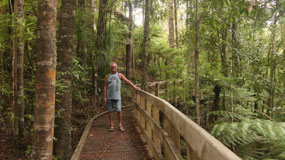
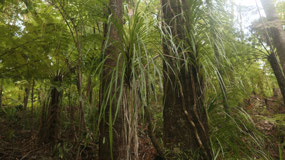
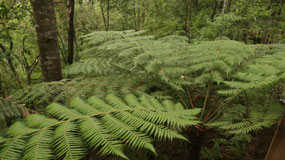
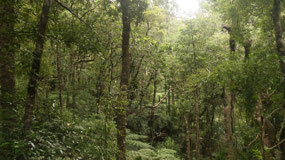
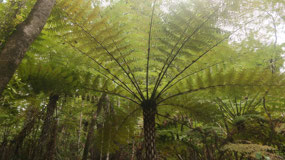
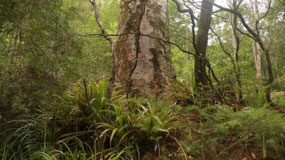
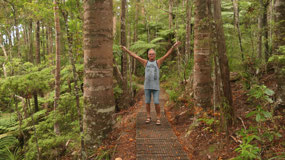
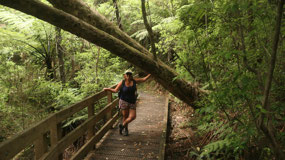

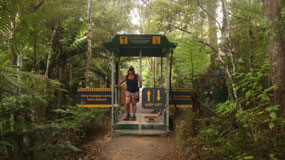
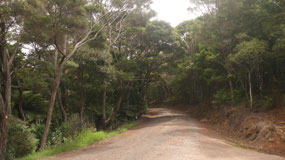
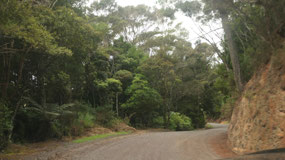
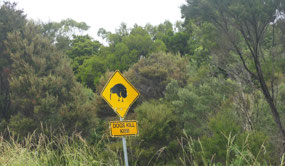
2025-05-23